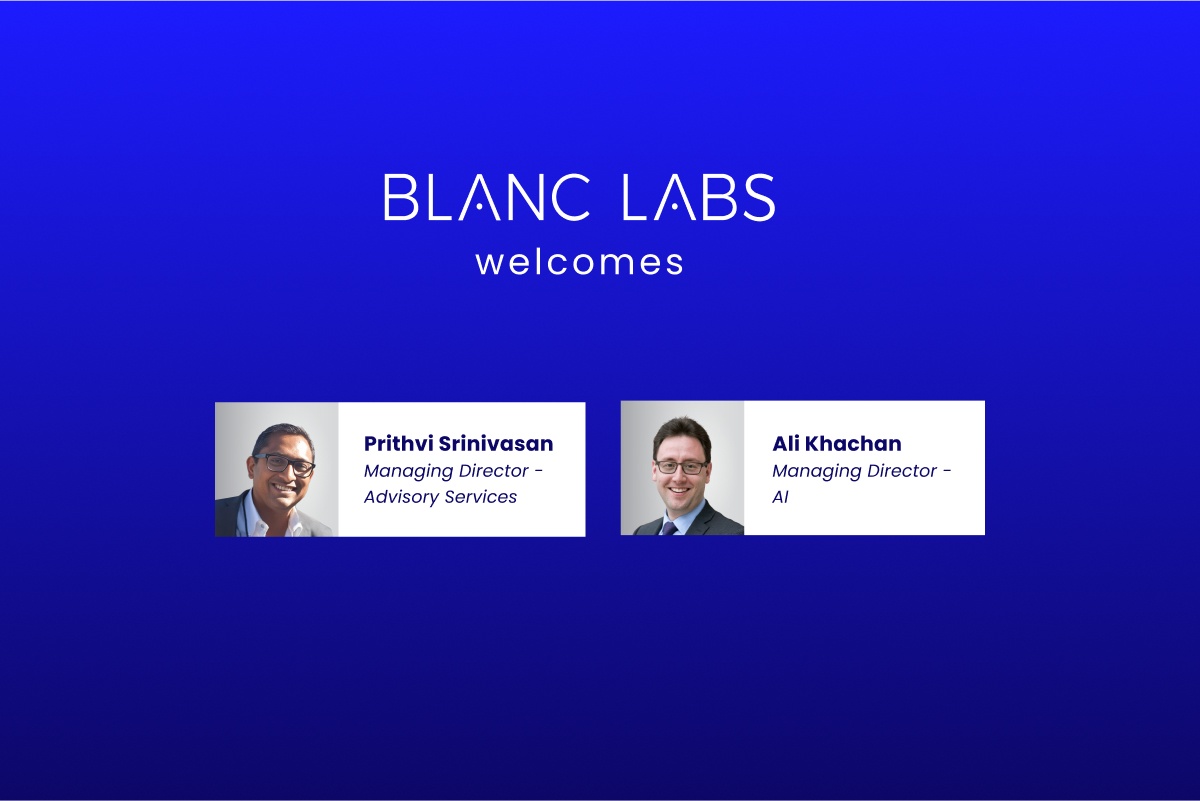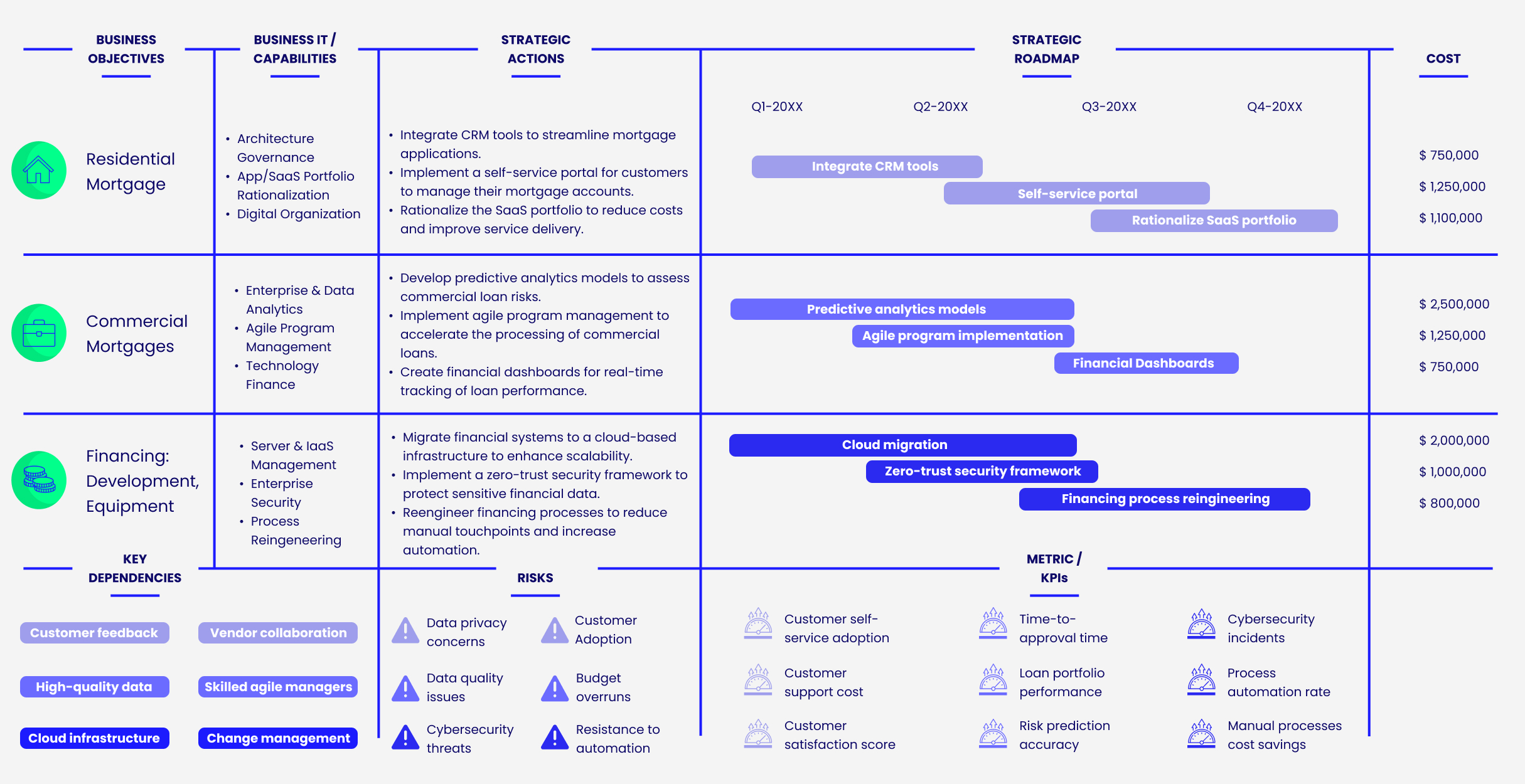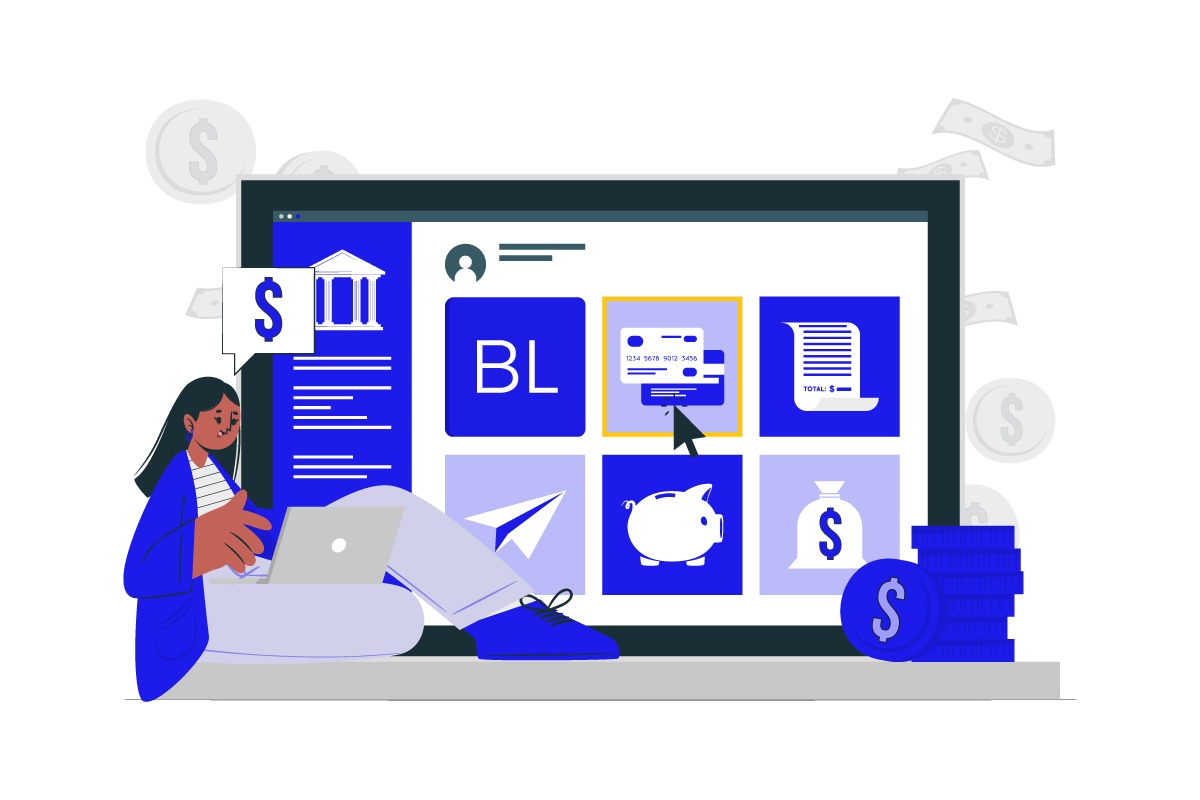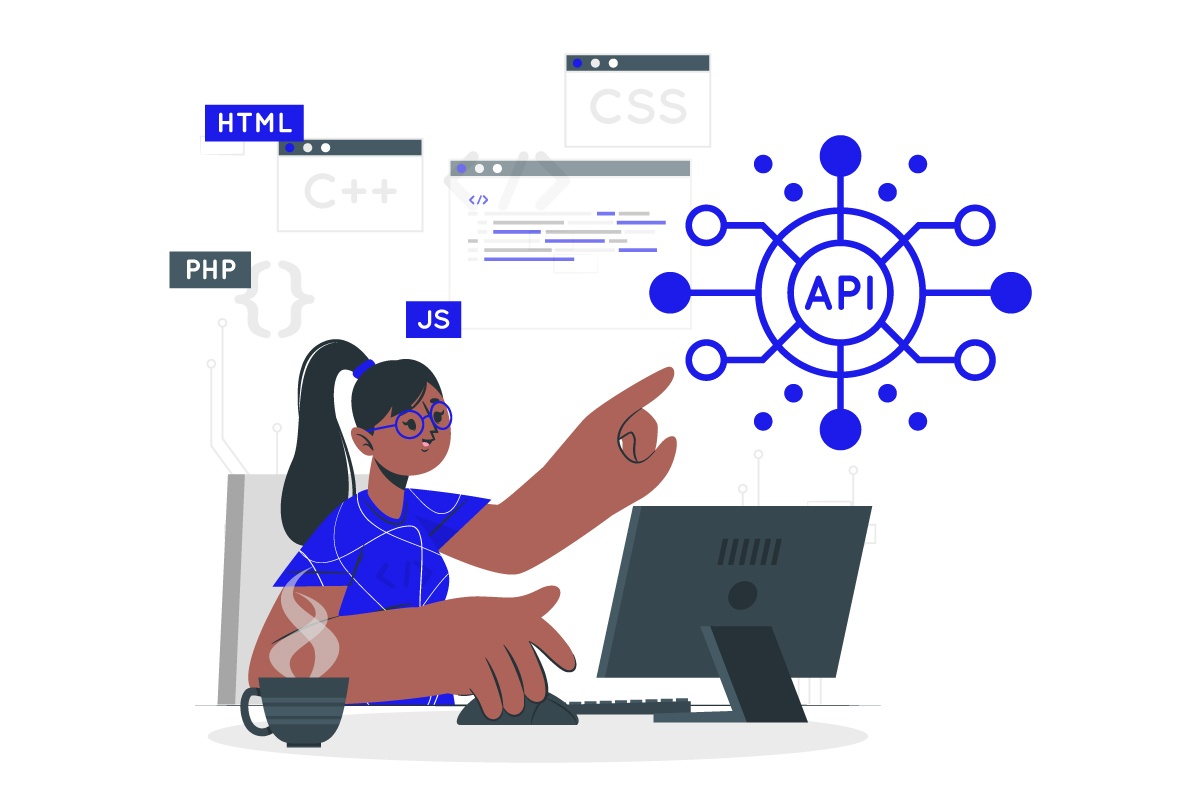Banking as a Service
Launch your own BaaS Strategy. Participate and win in the ecosystem economy by expanding your footprint and leveraging your key strengths.

The Future of Banking is Collaborative
BaaS may be a recent buzzword, but the concept is anything but new. Partnerships between banks and retailers, airline brands and dealerships have existed for over a decade. The difference is that they were harder and more expensive to deploy. Thanks to modern technology and specifically APIs, that has all changed and given way to embedded finance. Blanc Labs helps financial institutions and fintechs with strategy, roadmaps and implementation, resulting in successful BaaS partnerships.
BaaS Strategy and Engagement
Our framework helps you define your role in the evolving financial ecosystem, helps you identify opportunities in the BaaS value chain, and execute new solutions using APIs.

Tech Foundation Check
Our approach to BaaS begins with auditing current core systems, applications and integration endpoints to understand how a Banking as a Service approach could be enabled with your current tech stack.
BaaS Model Identification
Our strategy engagement deals with fundamental questions around desirability, feasibility and viability scoring of a BaaS offering. We work collaboratively with cross-functional stakeholders to identify which configuration (provider-only, provider-aggregator, distributor-only, distributor-aggregator) best suits your organization’s and market needs while considering the competitive landscape.
Platform and Partner Selection
Based on your organization’s goals and selected configuration, we help you identify the right partners based on strategic goals and priorities, and risk assessment.



Building the Business Case

Building the Business Case
New revenue streams
This is the most immediate benefit of Banking as a Service. Enable new products and services on a one-time basis or through subscription model.
Better customer acquisition and retention
Third-party providers represent a large number of dedicated customers. These customers are a potential audience whom you can reach and acquire at a significantly lower cost. BaaS is also helpful in retaining existing customers by delivering new products and platforms that they may already be familiar with.
Modernized technology
Banking as a whole, continues to be held back by legacy infrastructure and inflexible core systems. Banking as a Service is a way out. Through API-led integrations, banks can introduce leaner and flexible platforms developed by non-banking and third-party providers.
Banking as a Service Insights
Lenders Transformation Playbook: Bridging Strategy and Execution
AI’s Mid-Market Makeover in Financial Services

Mid-sized financial services institutions (FIs) are facing significant challenges during this period of rapid technological change, particularly with the rise of artificial intelligence (AI). As customer expectations grow, smaller banks and lenders must stay competitive and responsive. Canada’s largest financial institutions are already advancing in AI, while many others remain in ‘observer’ mode, hesitant to invest and experiment. Yet, mid-sized FIs that adopt the right strategy have unique agility, allowing them to adapt swiftly and efficiently to technological disruptions—even more so than their larger counterparts.
Process Improvement and Automation Support the Mission at Trez Capital 🚀

Trez distributes capital based on very specific criteria. But with over 300 investments in their portfolio, they process numerous payment requests and deal with documents in varied data formats. They saw an opportunity to enhance efficiency, improve task management, and better utilize data insights for strategic decision-making.
Align, Assemble, Assure: A Framework for AI Adoption

An in-depth guide for adopting and scaling AI in the enterprise using actionable and measurable steps.
Blanc Labs Welcomes Two New Leaders to Advance AI Innovation and Enhance Tech Advisory Services for Financial Institutions Across North America

Blanc Labs and TCG Process have partnered to transform lending operations with innovative automation solutions, using the DocProStar platform to enhance efficiency, compliance, and customer satisfaction in the Canadian lending market.
Blanc Labs Partners with TCG Process to Integrate their Automation and Orchestration Platform and deliver Advanced Intelligent Workflow Automation to Financial Institutions

Blanc Labs and TCG Process have partnered to transform lending operations with innovative automation solutions, using the DocProStar platform to enhance efficiency, compliance, and customer satisfaction in the Canadian lending market.
BPI in Banking and Financial Services in the US & Canada

Banking and financial services are changing fast. Moving from old, paper methods to new, digital ones is key to staying in business. It’s important to think about how business process improvement (BPI) can help.
Business Process Improvement vs Business Process Reengineering

Business process improvement vs. reengineering is a tough choice. In this guide, we help you choose between the two based on four factors.
What is the role of a Business Process Improvement Specialist?

A business process improvement specialist identifies bottlenecks and inefficiencies in your workflows, allowing you to focus efforts on automating the right processes.
Open Banking Technology Architecture Whitepaper

We’ve developed this resource to help technical teams adopt an Open Banking approach by explaining a high-level solution architecture that is organization agnostic.
Winning the Open Banking Race: A Challenger’s Path to Entering the Ecosystem Economy

Learn about the steps you can take in forming an open banking strategy and executing on it.
Canadian IT services firms offer a strategic opportunity for US Banks and FIs

Discover the strategic advantage for U.S. banks embracing innovation with cost-effective Canadian nearshore IT support.
These are not your grandmother’s models: the impact of LLM’s on Document Processing

Explore the transformative influence of large language models (LLMs) on document processing in this insightful article. Discover how these cutting-edge models are reshaping traditional approaches, unlocking new possibilities in data analysis, and revolutionizing the way we interact with information.
From Chaos to Clarity: Achieving Operational Excellence through Business Process Improvement

Discover transformative insights and strategies to streamline operations, enhance efficiency, and drive success.
10 Tips to Successfully Implement RPA in Finance
4 Ways APIs Can Improve Your Bank
4 Ways to Avoid A Failed Automation Journey
Lenders Transformation Playbook: Bridging Strategy and Execution
AI’s Mid-Market Makeover in Financial Services

Mid-sized financial services institutions (FIs) are facing significant challenges during this period of rapid technological change, particularly with the rise of artificial intelligence (AI). As customer expectations grow, smaller banks and lenders must stay competitive and responsive. Canada’s largest financial institutions are already advancing in AI, while many others remain in ‘observer’ mode, hesitant to invest and experiment. Yet, mid-sized FIs that adopt the right strategy have unique agility, allowing them to adapt swiftly and efficiently to technological disruptions—even more so than their larger counterparts.
Process Improvement and Automation Support the Mission at Trez Capital 🚀

Trez distributes capital based on very specific criteria. But with over 300 investments in their portfolio, they process numerous payment requests and deal with documents in varied data formats. They saw an opportunity to enhance efficiency, improve task management, and better utilize data insights for strategic decision-making.
Align, Assemble, Assure: A Framework for AI Adoption

An in-depth guide for adopting and scaling AI in the enterprise using actionable and measurable steps.
Blanc Labs Welcomes Two New Leaders to Advance AI Innovation and Enhance Tech Advisory Services for Financial Institutions Across North America

Blanc Labs and TCG Process have partnered to transform lending operations with innovative automation solutions, using the DocProStar platform to enhance efficiency, compliance, and customer satisfaction in the Canadian lending market.
Blanc Labs Partners with TCG Process to Integrate their Automation and Orchestration Platform and deliver Advanced Intelligent Workflow Automation to Financial Institutions

Blanc Labs and TCG Process have partnered to transform lending operations with innovative automation solutions, using the DocProStar platform to enhance efficiency, compliance, and customer satisfaction in the Canadian lending market.
BPI in Banking and Financial Services in the US & Canada

Banking and financial services are changing fast. Moving from old, paper methods to new, digital ones is key to staying in business. It’s important to think about how business process improvement (BPI) can help.
Business Process Improvement vs Business Process Reengineering

Business process improvement vs. reengineering is a tough choice. In this guide, we help you choose between the two based on four factors.
What is the role of a Business Process Improvement Specialist?

A business process improvement specialist identifies bottlenecks and inefficiencies in your workflows, allowing you to focus efforts on automating the right processes.
Open Banking Technology Architecture Whitepaper

We’ve developed this resource to help technical teams adopt an Open Banking approach by explaining a high-level solution architecture that is organization agnostic.
Winning the Open Banking Race: A Challenger’s Path to Entering the Ecosystem Economy

Learn about the steps you can take in forming an open banking strategy and executing on it.
Canadian IT services firms offer a strategic opportunity for US Banks and FIs

Discover the strategic advantage for U.S. banks embracing innovation with cost-effective Canadian nearshore IT support.
These are not your grandmother’s models: the impact of LLM’s on Document Processing

Explore the transformative influence of large language models (LLMs) on document processing in this insightful article. Discover how these cutting-edge models are reshaping traditional approaches, unlocking new possibilities in data analysis, and revolutionizing the way we interact with information.
From Chaos to Clarity: Achieving Operational Excellence through Business Process Improvement

Discover transformative insights and strategies to streamline operations, enhance efficiency, and drive success.
10 Tips to Successfully Implement RPA in Finance
4 Ways APIs Can Improve Your Bank
4 Ways to Avoid A Failed Automation Journey
Lenders Transformation Playbook: Bridging Strategy and Execution
AI’s Mid-Market Makeover in Financial Services

Mid-sized financial services institutions (FIs) are facing significant challenges during this period of rapid technological change, particularly with the rise of artificial intelligence (AI). As customer expectations grow, smaller banks and lenders must stay competitive and responsive. Canada’s largest financial institutions are already advancing in AI, while many others remain in ‘observer’ mode, hesitant to invest and experiment. Yet, mid-sized FIs that adopt the right strategy have unique agility, allowing them to adapt swiftly and efficiently to technological disruptions—even more so than their larger counterparts.
Process Improvement and Automation Support the Mission at Trez Capital 🚀

Trez distributes capital based on very specific criteria. But with over 300 investments in their portfolio, they process numerous payment requests and deal with documents in varied data formats. They saw an opportunity to enhance efficiency, improve task management, and better utilize data insights for strategic decision-making.
Align, Assemble, Assure: A Framework for AI Adoption

An in-depth guide for adopting and scaling AI in the enterprise using actionable and measurable steps.
Blanc Labs Welcomes Two New Leaders to Advance AI Innovation and Enhance Tech Advisory Services for Financial Institutions Across North America

Blanc Labs and TCG Process have partnered to transform lending operations with innovative automation solutions, using the DocProStar platform to enhance efficiency, compliance, and customer satisfaction in the Canadian lending market.
Blanc Labs Partners with TCG Process to Integrate their Automation and Orchestration Platform and deliver Advanced Intelligent Workflow Automation to Financial Institutions

Blanc Labs and TCG Process have partnered to transform lending operations with innovative automation solutions, using the DocProStar platform to enhance efficiency, compliance, and customer satisfaction in the Canadian lending market.
BPI in Banking and Financial Services in the US & Canada

Banking and financial services are changing fast. Moving from old, paper methods to new, digital ones is key to staying in business. It’s important to think about how business process improvement (BPI) can help.
Business Process Improvement vs Business Process Reengineering

Business process improvement vs. reengineering is a tough choice. In this guide, we help you choose between the two based on four factors.
What is the role of a Business Process Improvement Specialist?

A business process improvement specialist identifies bottlenecks and inefficiencies in your workflows, allowing you to focus efforts on automating the right processes.
Open Banking Technology Architecture Whitepaper

We’ve developed this resource to help technical teams adopt an Open Banking approach by explaining a high-level solution architecture that is organization agnostic.
Winning the Open Banking Race: A Challenger’s Path to Entering the Ecosystem Economy

Learn about the steps you can take in forming an open banking strategy and executing on it.
Canadian IT services firms offer a strategic opportunity for US Banks and FIs

Discover the strategic advantage for U.S. banks embracing innovation with cost-effective Canadian nearshore IT support.
These are not your grandmother’s models: the impact of LLM’s on Document Processing

Explore the transformative influence of large language models (LLMs) on document processing in this insightful article. Discover how these cutting-edge models are reshaping traditional approaches, unlocking new possibilities in data analysis, and revolutionizing the way we interact with information.
From Chaos to Clarity: Achieving Operational Excellence through Business Process Improvement

Discover transformative insights and strategies to streamline operations, enhance efficiency, and drive success.
10 Tips to Successfully Implement RPA in Finance
4 Ways APIs Can Improve Your Bank
4 Ways to Avoid A Failed Automation Journey
FAQs
What is Banking as a Service (BaaS)?
Banking as a Service (BaaS) is a relatively new concept in the financial industry that allows non-bank entities to provide financial services through the use of APIs offered by traditional banks. BaaS enables businesses to integrate banking and financial services into their own platforms, products, or applications without the need to build these services from scratch or become a licensed bank themselves.
How does Banking as a Service (BaaS) work for platforms?
BaaS works for platforms by allowing them to integrate banking and financial services seamlessly into their existing offerings. BaaS applications include customer onboarding, Know-Your-Customer (KYC) and anti-money laundering (AML) checks; payments and transfers; balance inquiries and account information, among others. BaaS providers, being licensed financial institutions, handle the regulatory aspects of offering banking services. They ensure that the transactions and services offered through the platform follow financial regulations and industry standards. This relieves the platform from the burden of dealing with complex regulatory requirements. By relying on BaaS for banking services, platforms can focus on their core competencies and unique offerings. They don’t need to divert resources to develop and maintain complex banking infrastructures, leaving that responsibility to the BaaS provider.
Are BaaS and Embedded Finance the same?
Banking as a Service (BaaS) and Embedded Finance are related concepts but they are not the same. BaaS is a model that allows non-bank entities, such as fintech companies, e-commerce platforms, or other businesses, to access and utilize banking-related services through APIs provided by traditional banks. BaaS acts as a bridge between traditional banking institutions and non-bank businesses, enabling these businesses to offer financial services to their customers without becoming licensed banks themselves.
On the other hand, Embedded Finance refers to the integration of financial services like payments, lending, insurance, savings, etc., directly into non-financial platforms or applications. In this model, companies that are not traditional financial institutions, such as e-commerce platforms, ride-hailing apps, or social media platforms, incorporate financial products and services as part of their core offering. Embedded finance allows non-financial platforms to meet their customers’ financial needs without redirecting them to external financial institutions.



